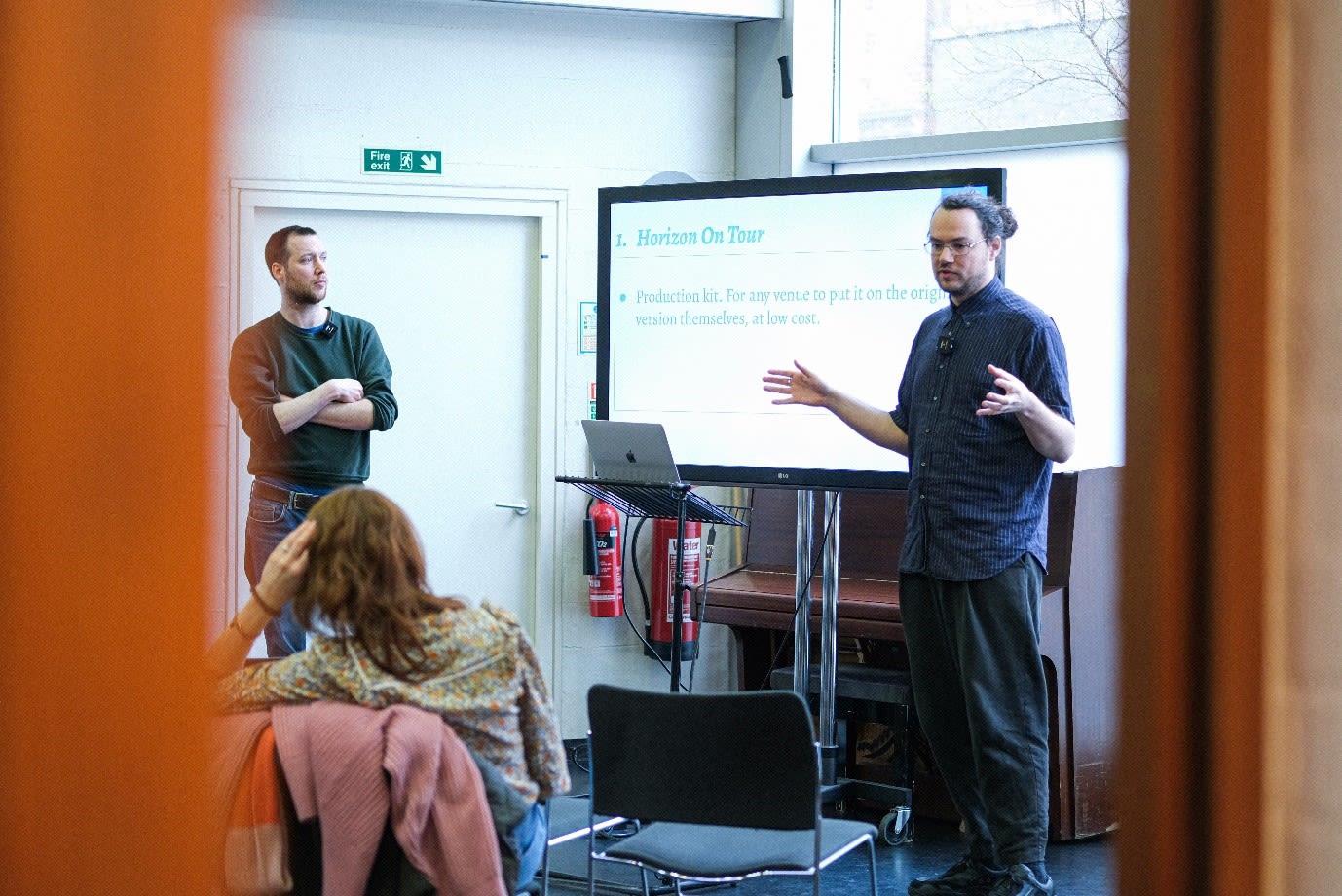
AKO Storytelling Institute runs the Horizon Impact Lab in association with National Theatre Studio

- Written byKate Keara Pelen and Fran Panetta
- Published date 22 August 2023

At the AKO Storytelling Institute, our hypothesis is that storytelling can change the world. As part of UAL’s new Social Purpose Group, our mission is to enable storytellers and campaigners to make a greater social impact through their work.
We are not the first to be working in this space. There are decades of thinking and practice in this area already. What we are discovering though, is that often this work gets siloed into industries. One of the roles we intend to play at the Institute is to bring together the work from different sectors to see if learnings can translate across disciplines.
We ran an Impact Lab along with the National Theatre (NT) in spring 2023 to test out some of these ideas. NT and the AKO Storytelling Institute invited theatre collective, Opening Statement, to spend a week with us and programmed an intensive series of workshops testing out that hypothesis. Opening Statement create performances dealing with major social issues. They believe that art can play an important role in debate.

Joeri Heegstra and Samir Veen are the collective’s directors, and they had already created a prototype of a work called Horizon, co-commissioned by IDFA DocLab and the National Theatre. Horizon is a 1:1 participatory theatre work where the conversation becomes the performance. The audience member spends half an hour with a teenage actor, imagining their future. It subtly hints at the climate emergency, the audience’s complicity, and during the course of the conversation, the audience member realises the impact climate change may have on this young person’s future.
The thing is, only a small number of people could see this powerful piece.
The obvious solution would be to scale this piece as it is, to have more performances. But at the AKO Storytelling Institute, we wanted to go back to first principles: what impact was the piece trying to have. Perhaps there were different, more creative and effective ways to achieve this?
Over the week we brought in experts ranging from climate campaigning, strategic communications, imagination activism and narrative change to closely examine their original work, its objectives and its potential.

“We didn’t really know what to expect. We do not come from a world where these frameworks are used.” - Joeri Heegstra and Samir Veen.
Through the week our interdisciplinary team helped them unpack, discuss and rethink their piece, carefully considering their intended audience and impact goals, form, scale and reach.
“It's quite common for artists to create something that has impact but they haven't designed it with those metrics and those considerations in mind.” - Phoebe Tickell.
Our contributors included Clare Farrell (UAL / XR), Phoebe Tickell (Moral Imaginations), Paddy Loughman (Reset Narratives), Creative Agency Purpose, Crossover Labs and the NT’s Immersive Storytelling Studio.
Day 1: Content and audiences
Clare Farrell from Extinction Rebellion shared her insights into the biggest challenges faced by those engaged with addressing the climate and ecological emergency and what is most needed to support the movement right now. Paddy Loughman from Reset Narratives (now Inter-Narratives) followed this with an overview of audience, narrative and behavioral insights.
"Human psychology …] these tools and approaches … have been the bread and butter of the advertising industry" - Paddy Loughman.
Day 2: Imagination theory
Phoebe Tickell of Moral Imaginations talked about the power of Imagination practice and introduced the notion of a theory of change.
“What I'm taking away, is how much potential there is for artists to make the bridge between their work and thinking rigorously about where the intervention and impact lies.” - Phoebe Tickell.
Day 3: Form
Informed by the input they had received, the artists used a ‘form explosion’ to explore possible evolutions and adaptations of the piece, then started to hone in on what Horizon v2 might be.
Day 4: Change and evaluation
Strategy consultants, Purpose, helped the artists develop their theory of change and gave an overview of evaluation techniques.
Day 5: Presentation
Having developed their pitch for a second iteration of Horizon, the artists presented to an invited audience and fielded questions.
With thanks to Toby Coffey at the NT Studio, Soham and Orlando and all of our speakers and guests.